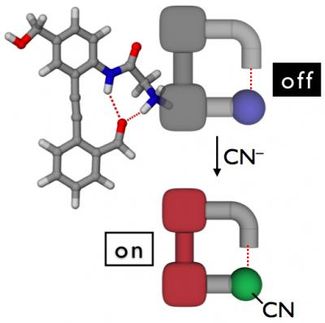Carbon molecule with a charge could be tomorrow's semiconductor
Advertisement
Virginia Tech chemistry Professor Harry Dorn has developed a new area of fullerene chemistry that may be the backbone for development of molecular semiconductors and quantum computing applications. As part of the research to place gadolinium atoms inside the carbon cage for MRI applications, Dorn created 80-atom carbon molecule with two yttrium ions inside. Then he began to fool with the materials of the cage itself. He replaced one of the 80 atoms of carbon with an atom of nitrogen (providing Y2@C79N). This change leaves the nitrogen atom with an extra electron. Dorn discovered that the extra electron, instead of being on the nitrogen atom on the fullerene cage surface, ducks inside between the yttrium ions, forming a one-electron bond. "Basically, a very unusual one electron bond between two yttrium atoms," he said.
Discovery of this new class of stable molecules (M2@C79N ) was supported by computational studies by Daniel Crawford, associate professor of chemistry at Virginia Tech, and the structure was confirmed by x-ray crystallographic studies by Alan Balch , professor of chemistry at the University of California, Davis.
This research is reported in the Journal of the American Chemical Society (JACS), in an article by Dorn and his colleagues at Virginia Tech and UC Davis. The article does not speculate about potential applications, but Dorn does.
"No one has done anything like this," said Dorn. "Since the article was published, we now know that we can take the electron back out of the fullerene cage."
He says the discovery could be important to the new fields of spintronics, molecular electronics, and micro to nanoscale electronics, as well as the new field of quantum computing.
"The single electron bonded-diatomic yttrium has unique spin properties that can be altered. Increasing the polarization of this spin, could be important for improving the sensitivity of MRI and NMR, he said.
But more interesting are the electronic applications. "If we replace one of the carbon atoms with boron instead of nitrogen, we would be an electron short, instead of having an extra electron. Now you have the components of a semiconductor," Dorn said.
Original publication: Tianming Zuo, Liaosa Xu, Christine M. Beavers, Marilyn M. Olmstead, Wujun Fu, Crawford, Balch, and Dorn; "M2@C79N (M ) Y, Tb): Isolation and Characterization of Stable Endohedral Metallofullerenes Exhibiting M-M Bonding Interactions inside Aza[80]fullerene Cages"; JCAS 2008.






























































